7 Key Steps of Creating a Procurement Strategy


Strategic procurement is a continuous, company-wide effort.
Without it, you’d find it much harder to get goods and services on time and at an optimal cost.
The right strategy allows you to streamline processes, nurture strong supplier relationships, and address your unique needs.
Procurement strategies are also in place to ensure rapid market shifts don’t leave you blindsided.
Does having extra clarity, efficiency, and safety sound good to you?
If so, it’s time you join us for a deep dive into the key steps of creating a good procurement strategy!
Defining an effective, fact-based procurement strategy begins by evaluating, and even scrutinizing your existing processes, systems, and spending practices.
Fully understanding your past purchasing decisions and processes allows you to identify your procurement strengths and weaknesses, and quickly pinpoint areas for improvement.
Begin your internal analysis by answering the following questions:
Answering these questions is essential whether you already have a procurement strategy in place or not.
However, if you already have a strategy, consider how well it helps you meet your objectives and what changes are needed to sustain your future plans.
It’s helpful to structure your internal analysis along these four points:
| Spend Taxonomy | List all categories of products and services your organization procures. Determine whether specific categories require specific procurement approaches. |
| Procurement Scale & Volume | Take a look at the scale of your procurement activities. Consider the number of transactions, the value of purchases, and their frequency. |
| Operating model | Determine whether the current procurement operating model (centralized, decentralized, or hybrid) fits your needs. |
| Internal Resources | Finally, evaluate the size and expertise of your procurement team. List all units and departments involved and determine whether you have sufficient human and financial resources for all activities. |
Several methods, such as Gap analysis, can help you do a comprehensive analysis of the current state of your procurement practices (CSA).
This type of assessment is based on collecting data on key performance indicators (KPIs) to better understand the existing processes.
At the same time, it creates a roadmap leading you closer to your desired state.
Once you’ve collected enough insights, it’s time to start shaping your strategy based on its main goals.
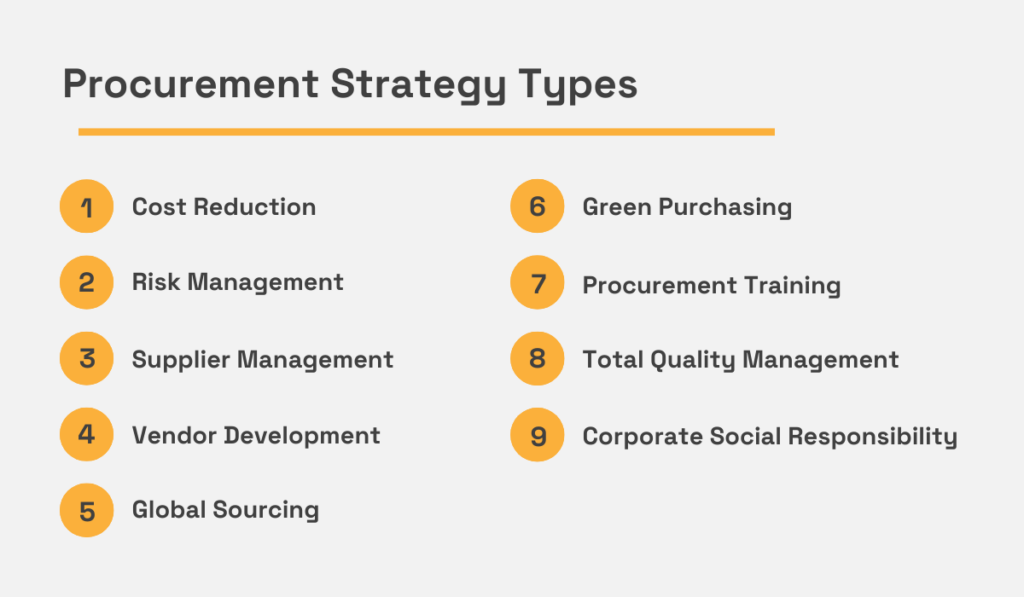
Source: Veridion
Depending on specific business objectives, your procurement strategy can take several directions, from ensuring better supplier management to implementing more ecological practices.
Regardless of your key focus areas, you also have to think about the strategy’s specific goals.
What does your strategy need to accomplish?
After all, knowing where you’re heading, and how far along you are now needs to be clear to everyone inside and outside the procurement team.
That’s the only way you’ll be able to track progress. The inability to do so creates confusion and impedes success on an individual and organizational level.
Cindy Rittel, a Director of Sales and formerly a Senior Sourcing Advisor at a group purchasing organization Una, notes that measurable goals create clarity about expectations and provide benchmarks for success.
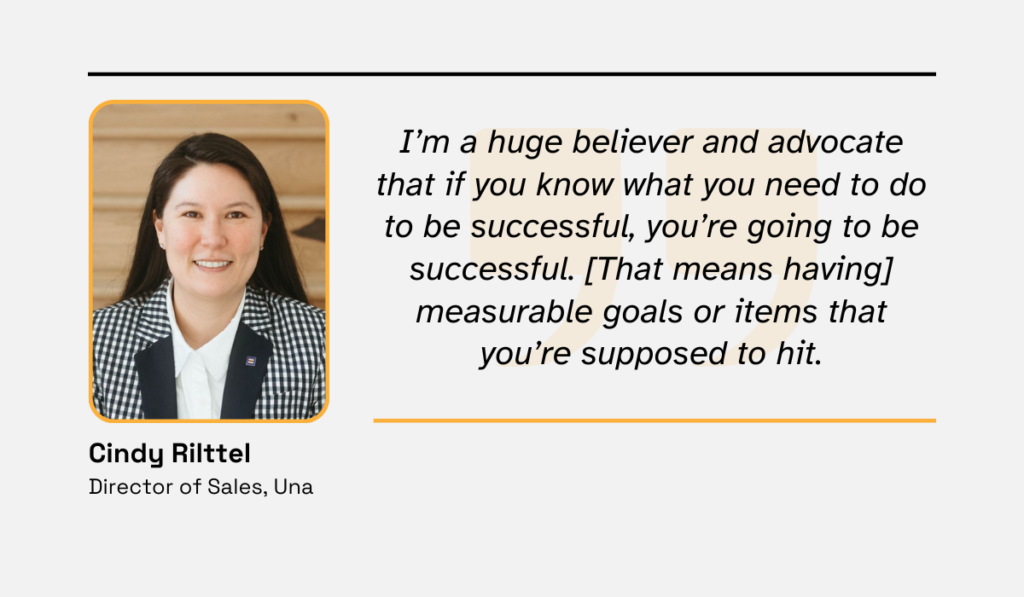
Illustration: Veridion / Quote: Una
On an organizational level, some common goals include cost reductions, improved efficiency, or enhanced supplier relationship management.
These goals can be ranked based on their impact on the company’s bottom line, but regardless of your priorities, setting specific procurement goals carries invaluable benefits.
However, not every goal is a good goal.
There are a couple of elements you need to keep in mind when defining your goals for maximum impact, and the SMART framework or criteria can help you with that.
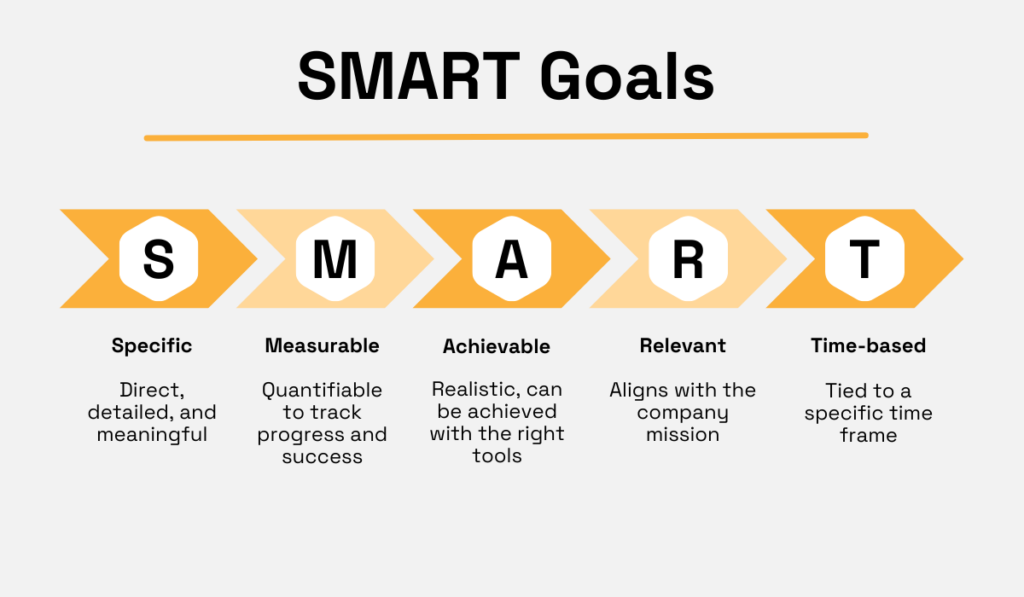
Source: Veridion
“Putting 20% more spend under management by Q2 next year is much more specific than “spend less money on goods.” And therefore more attainable.
Of course, these specific objectives need to be observed within the wider company context, and aligned with its vision and business strategy.
That’s why you should involve all relevant stakeholders at this stage.
Strategic procurement planning usually involves the following actors:
All stakeholders involved in the procurement process should first be on board with the strategy and what it aims to achieve, and then actively participate in goal setting.
By securing stakeholder buy-in, you reduce the chances of backtracking and can move on to the next step.
Having collected internal insights and secured alignment within the company, it’s time to assess the external conditions by conducting market analysis.
Integrating observations about market trends, supplier landscape, and regulatory environment into your procurement strategy means getting the full picture of the state of the market.
In this way, you can shape your strategy based on the most relevant insights.
Conducting a detailed market study is easier if you rely on a specific methodology or look to combine multiple approaches:
| SWOT Analysis | Combines internal and external factors. By identifying internal Strengths and Weaknesses, businesses gain an understanding of how to best seize external growth Opportunities, and mitigate Threats in the market. |
| Porter’s Five Forces | Used to determine how competitive the market is based on five distinct points, from the threat of new entrants to supplier bargaining power. It helps businesses assess their position, and develop strategies to gain competitive advantage. |
| PESTEL Analysis | Sheds light on 6 macro-environmental factors (Political, Economic, Social, Technological, Environmental, Legal) impacting the business environment, from regulatory changes and major political upheavals to advances in technology. |
Since market conditions change rapidly and frequently, the collected information must be relevant and up-to-date.
Assessing market conditions on your own can be challenging and time-consuming, but luckily there is a solution.
Enter, Veridion.
Our company provides procurement professionals with fresh data on suppliers, making it much easier to navigate the industry landscape and its daily, weekly, and monthly changes.
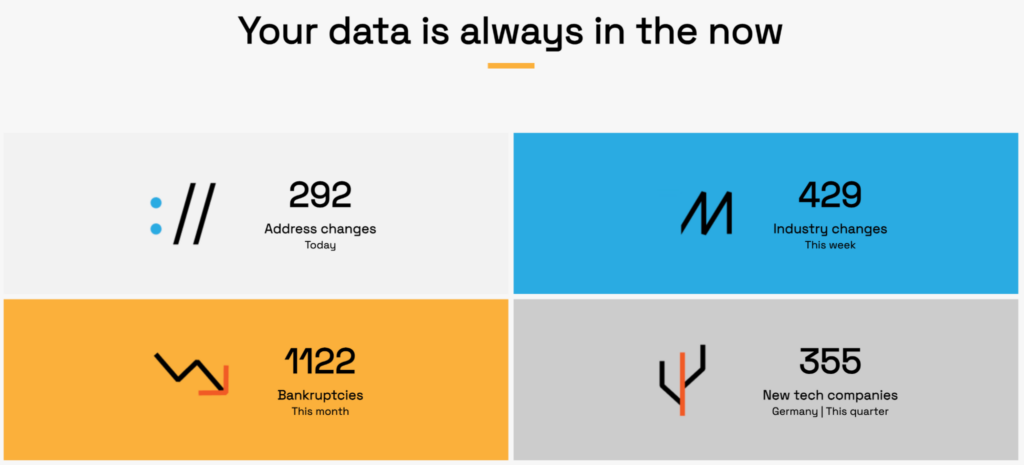
Source: Veridion
It’s often used for market research, but it’s not just about accounting for different industry changes.
Veridion’s advanced search API is a powerful tool for supplier sourcing that helps you find exactly what you need with minimal time spent.
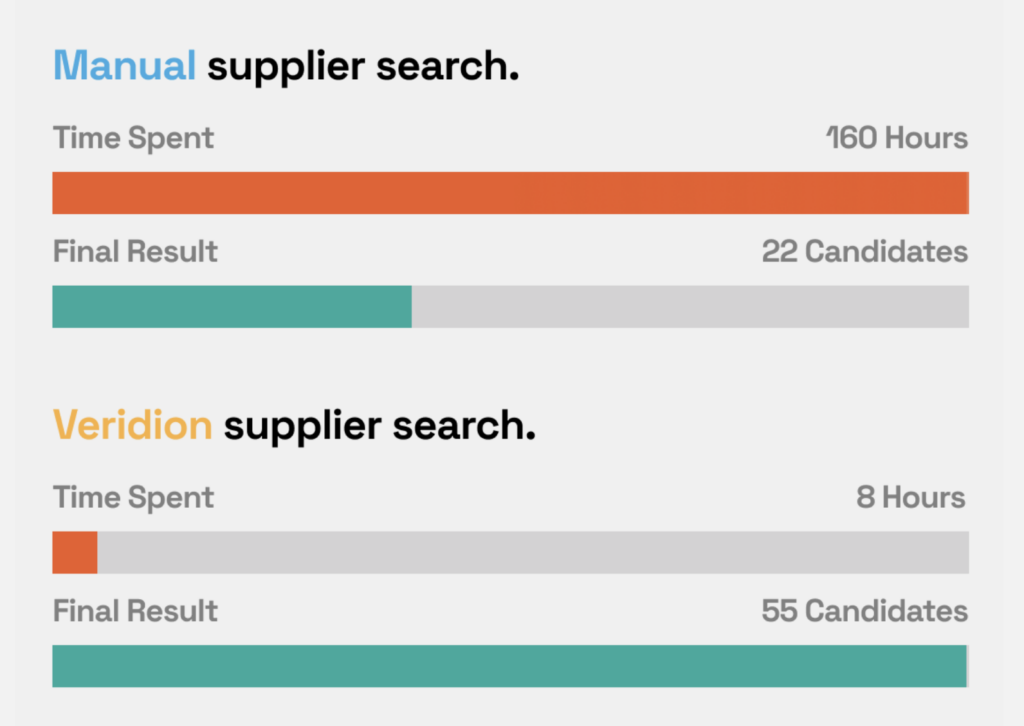
Source: Veridion
Compared to manual supplier search, Veridion yields more candidates in significantly less time, providing procurement teams with total visibility of the supplier landscape.
With the right data at your disposal, assessing market conditions becomes nearly effortless, and your procurement strategy is sure to hit the nail on the head.
Now that you have all the internal and external factors in mind, it’s time to define new procurement policies, the set of rules guiding your procurement strategy.
These policies will define your standards, guide employees’ decision-making and lay down the foundation for standard operating procedures.
The terms policies and procedures are sometimes used interchangeably, which is why it’s important to clarify what procurement policy is and what it isn’t.
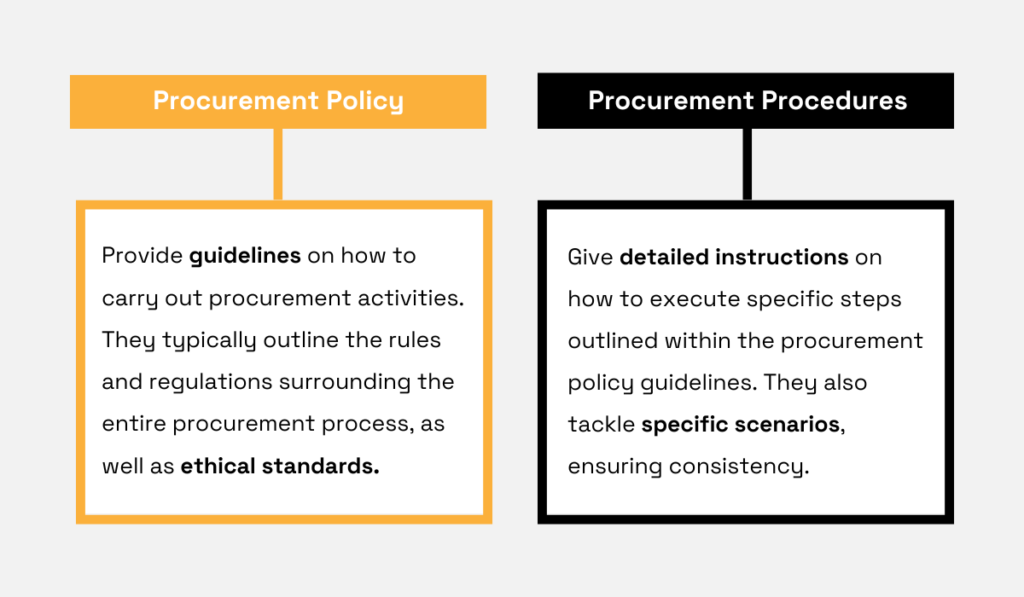
Source: Veridion
To put it simply, policies define the broader standards that influence the company’s purchasing decisions, while procedures provide detailed, practical instructions on how to realize them.
Other than ethical standards, procurement policies typically contain vendor selection guidelines, contract management, and budget allocation.
There are multiple benefits to neatly defining the procurement process through policies, including:
But to reap these benefits in full, your procurement policy should include several key elements, starting with its scope and purpose.
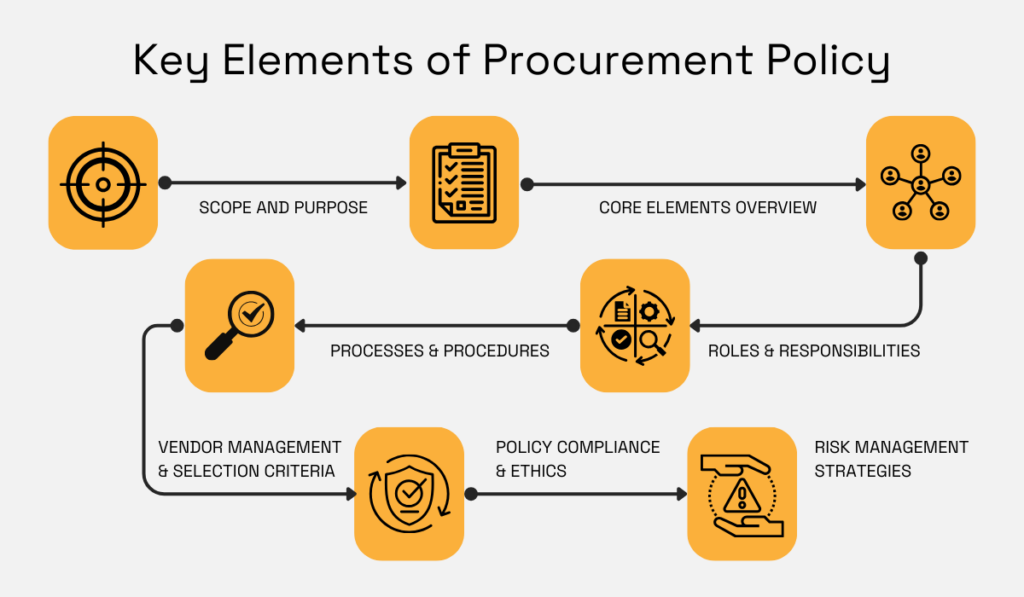
Source: Veridion
By outlining different criteria and standards, together with key processes and procedures, you ensure consistency, compliance, and efficiency for everyone involved in the procurement process.
Remember: procurement policies are only a part of the wider strategy, which means that you now have everything you need to draft it.
Now it’s time to draft the procurement strategy and expand on the previously defined policies and procedures.
This means listing different procurement methods, expounding them, and zooming in on supplier relationship management strategies.
D should also include:
Other than the content of the strategy, you need to be mindful of the language you’re using.
For example, when describing specific processes it’s important to define who is responsible for which part of it, as seen in this example.
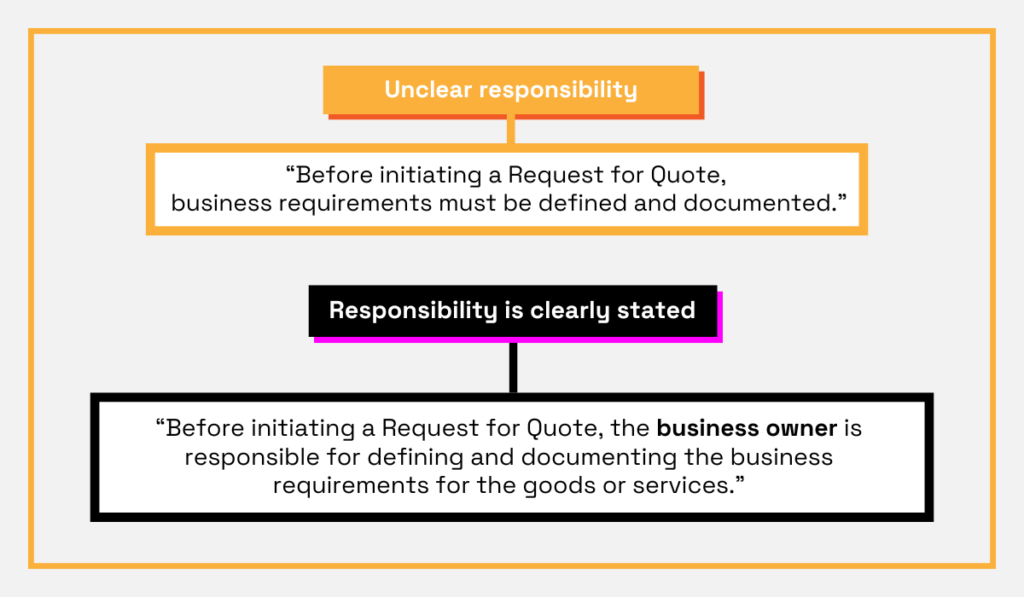
Source: Veridion
The same applies for any approvals and authorizations that you need to communicate.
Another key point regarding language is that you must get your key messages across to ensure compliance.
So, how do you do that?
For starters, the procurement strategy document shouldn’t be too long.
Stick to core information, and communicate additional details through annexes where needed.
Moreover, using engaging, easy-to-understand language goes a long way toward ensuring broader understanding, as pointed out by the Digital Procurement Advisor James Meads.
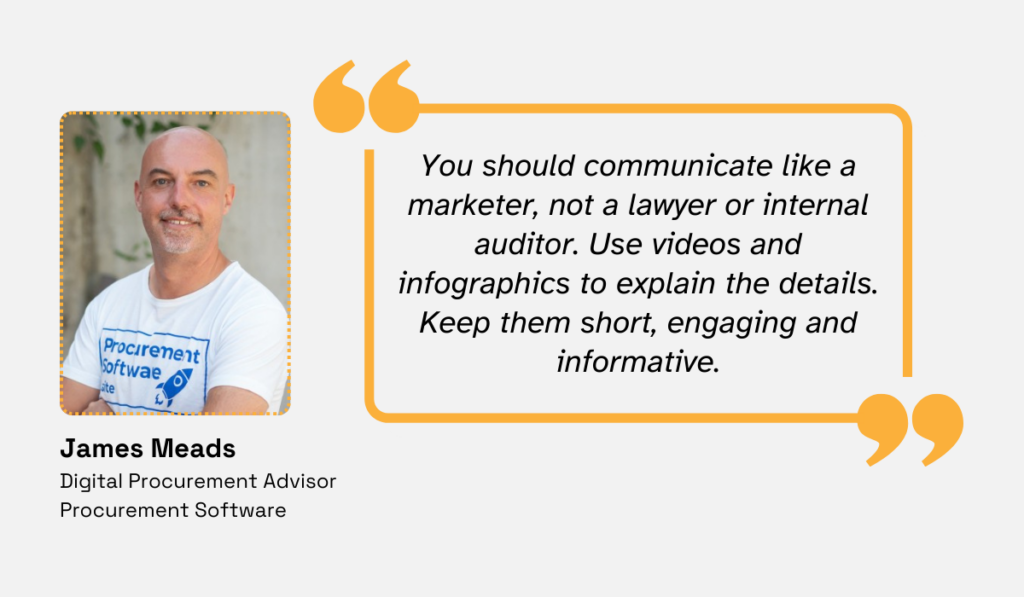
Illustration: Veridion / Quote: LinkedIn
Think about it; a long document written in technical jargon is likelier to be ignored than an engaging two-pager.
And if you’re not sure you’re hitting the right tone, Meads also advises consulting with marketing or internal comms colleagues or hiring a copywriter.
Now that you know exactly what needs to be done and how it’s time to determine who is involved in the procurement process, and to what capacity.
Although some responsibilities are already defined in the procurement strategy itself, assigning roles and responsibilities to key stakeholders determines the procurement team’s overall performance.
How you assign responsibilities influences both the efficiency of the procurement process and the effectiveness of your employees.
According to findings by the employee feedback solution provider Effectory, role clarity enhances performance by 25%, creating a positive effect throughout the organization.
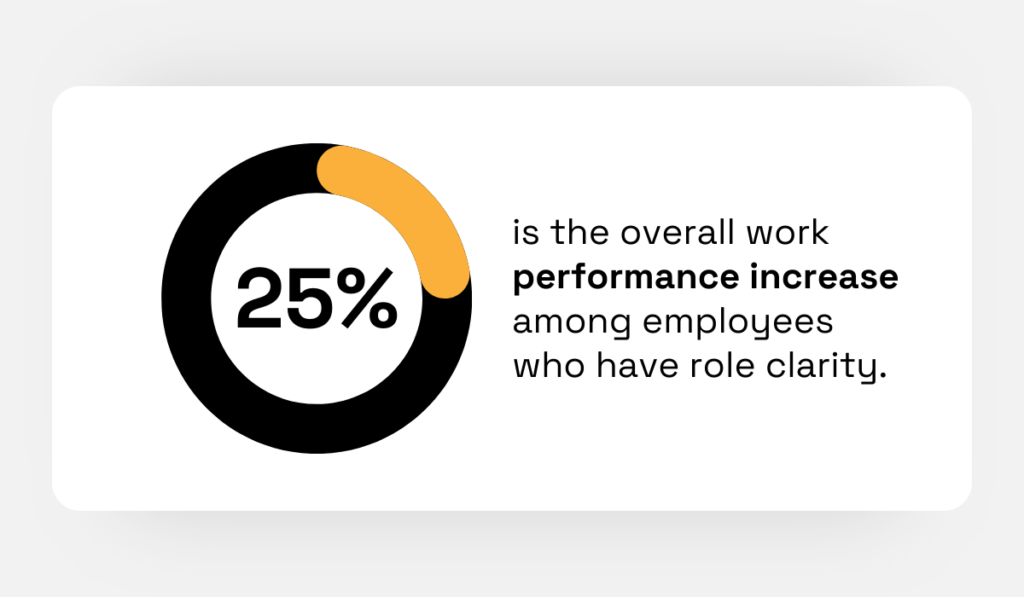
Illustration: Veridion / Data: Effectory
In other words, if your procurement team struggles to understand their roles and responsibilities, it would affect their performance and the overall process.
Clear role division is the only way to avoid this, so let’s first do a quick breakdown of roles that could be found within procurement:
When assigning responsibilities, keep in mind that these roles fall into specific categories.
Operational management roles are very different from specialized or supporting roles, so this distinction can help you navigate the distribution of responsibilities and tasks.
A dedicated team for developing and implementing the new strategy should include experts from different fields, including procurement, risk, legal, IT, and change management.
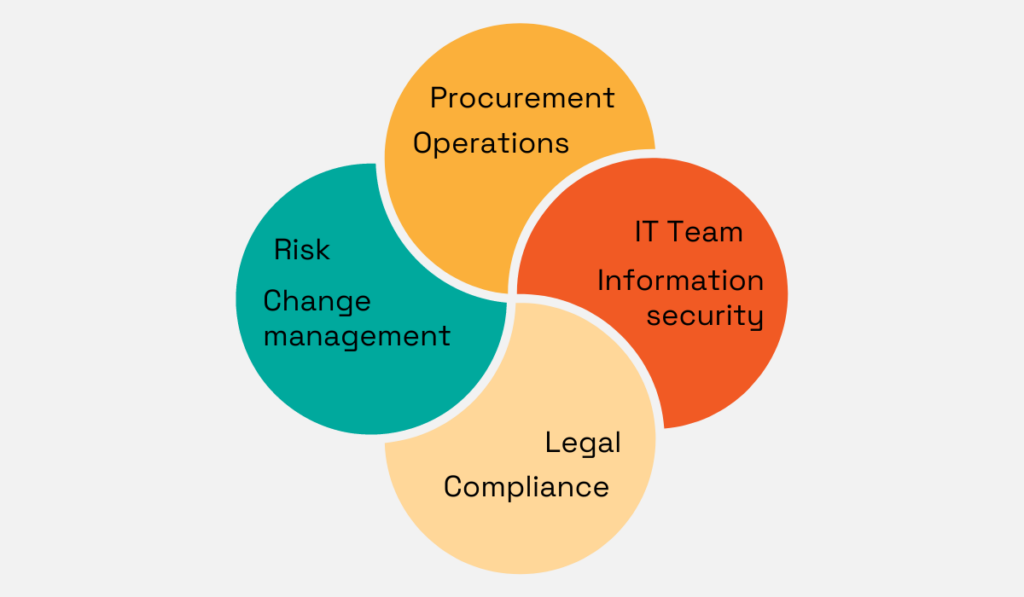
Source: Veridion
Finally, don’t forget to identify a team lead to maximize the potential of a new setup.
The team lead would be in charge of coordinating key procurement activities and ensuring that the procurement strategy is communicated properly.
The final step revolves around measuring the effectiveness of your procurement strategy by establishing key performance metrics you’ll be tracking.
Consistent tracking of your implementation efforts allows you to detect weak areas and improve the strategy on the go.
To do that, you first need to determine which performance metric will show you what you need to know.
Different metrics are relevant for different procurement processes and purposes.
However, when it comes to measuring performance, it’s best to divide the KPIs into three broader categories.
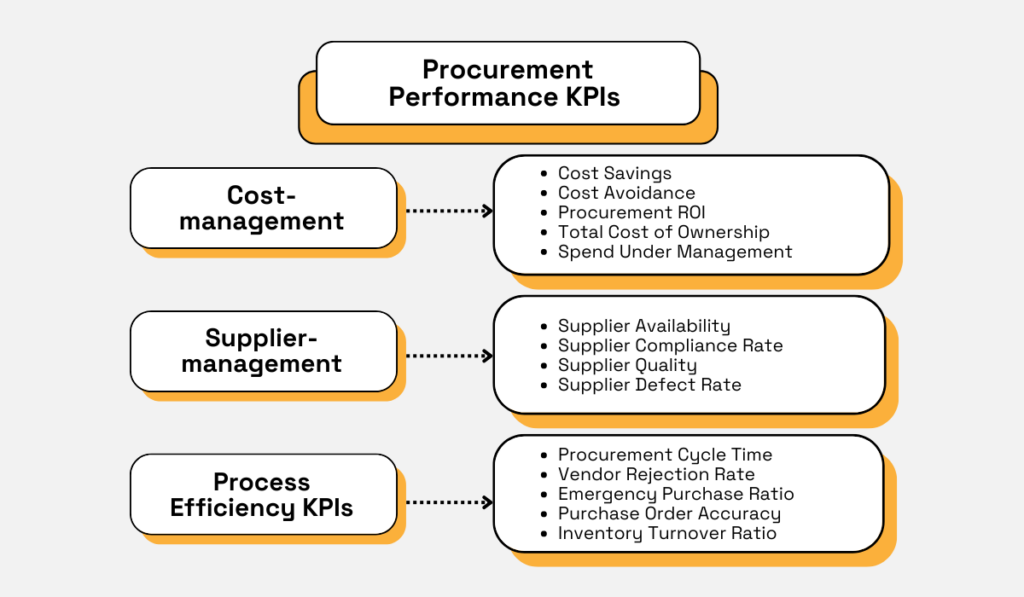
Source: Veridion
These KPIs help answer several key questions regarding costs, contracts, suppliers, cycle time, and more.
Don’t forget that even if you started to implement the procurement strategy, it’s not set in stone.
Tracking key performance indicators signals a commitment to continuous improvement of different procurement practices and procedures.
In addition to monitoring procurement KPIs, you can establish periodic procurement benchmarking reviews, assess regulations and procurement manuals, and conduct surveys.
Based on the internal stakeholder survey, the procurement team of a monitoring and analytics SaaS, Datadog, identified practices that weren’t adding value or actually hindered processes.
Michelle Vita, their Head of Procurement shared their story for Vendr.
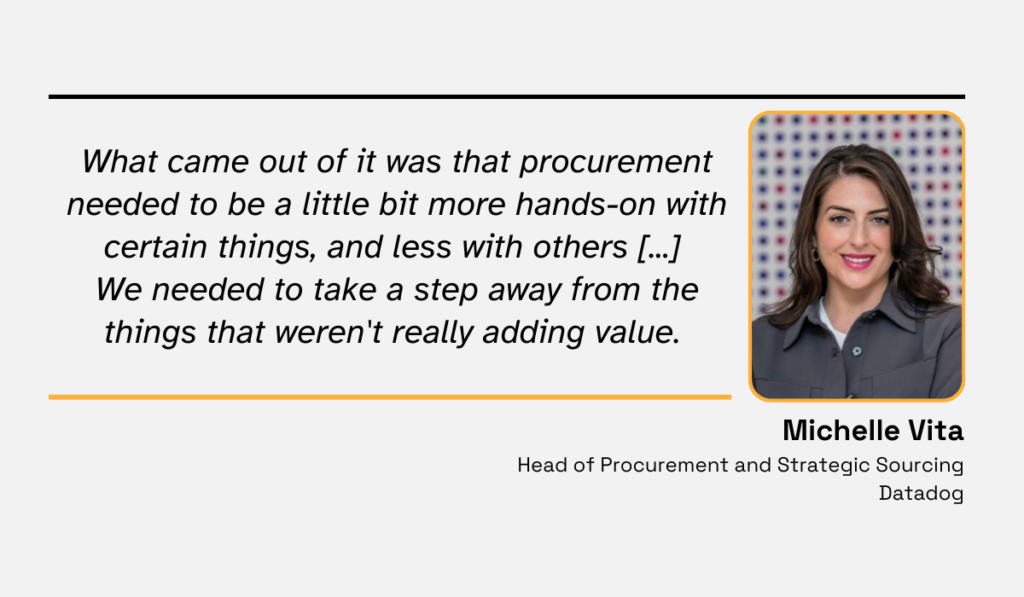
Illustration: Veridion / Quote: Vendr
They ended up automating their legal review process, reducing the human touchpoints to ensure better flow and increase stakeholder satisfaction.
Ultimately, creating a procurement strategy is one thing, but reviewing and improving on it is an ongoing process that brings enormous value.
Effective procurement strategies are developed systematically, accounting for the increasing complexity of business environments, but also internal factors.
Striving for procurement excellence means setting measurable goals, but devising strategies and procedures that align with key business objectives and industry standards.
Your strategy will benefit from role clarity and data-driven approaches, which speed up processes and enable effective tweaking based on designated KPIs.
Keeping tabs on every aspect of your procurement strategy may seem exhausting, but as this article shows, the huge performance boost is well worth the planning and effort!